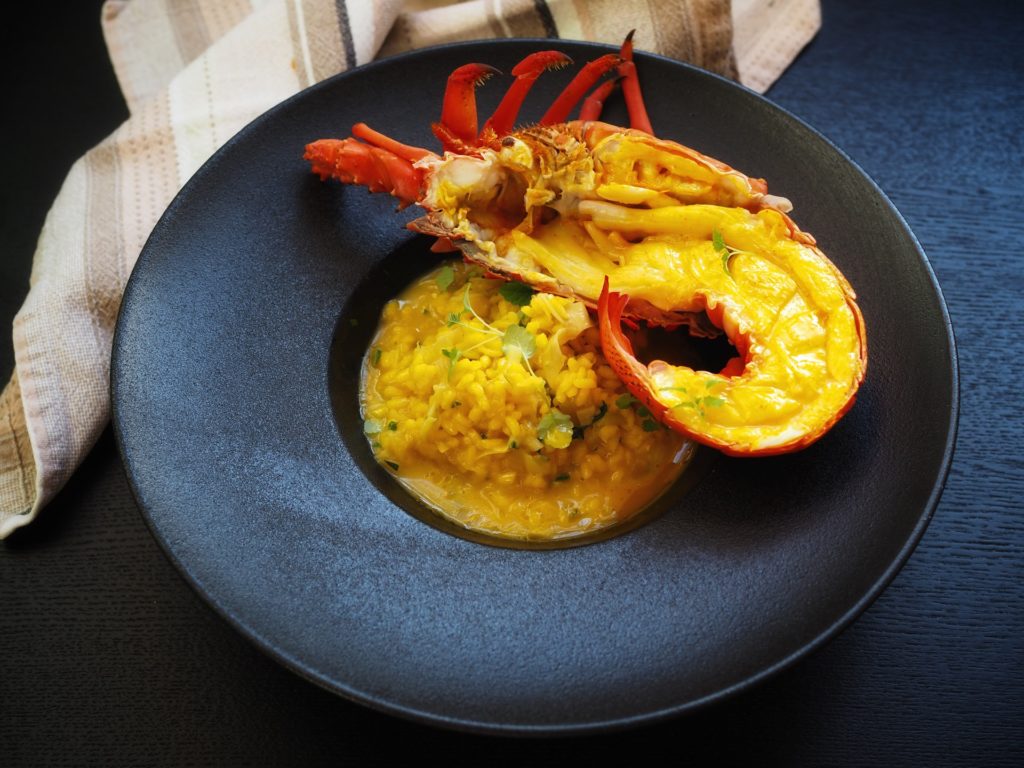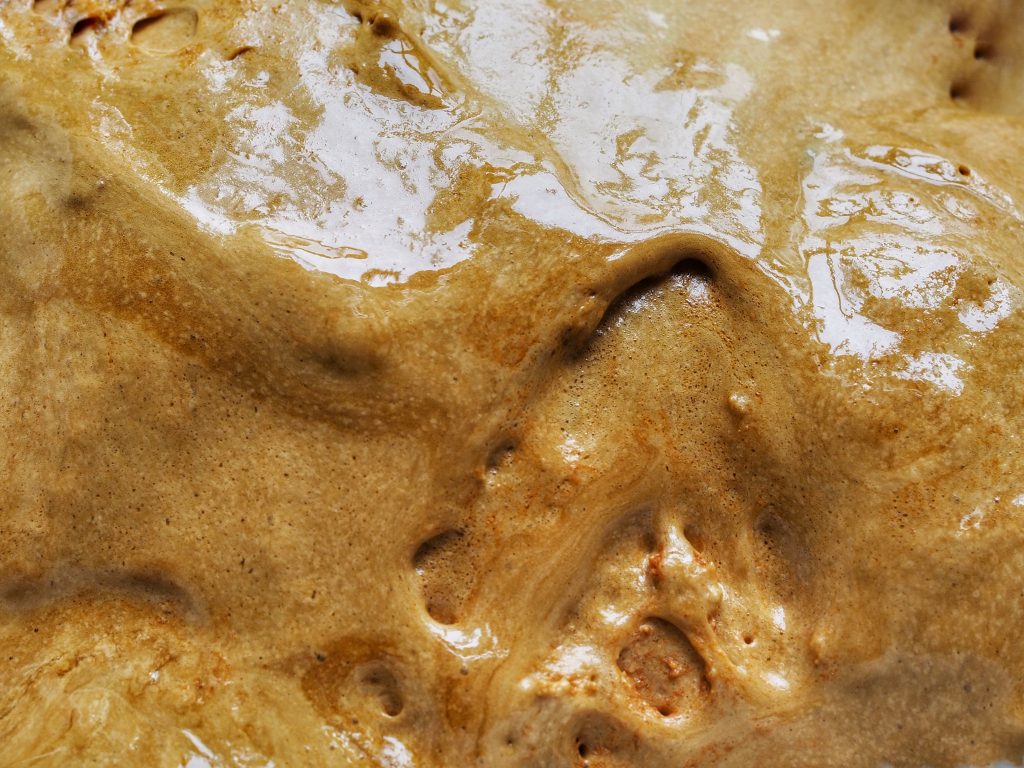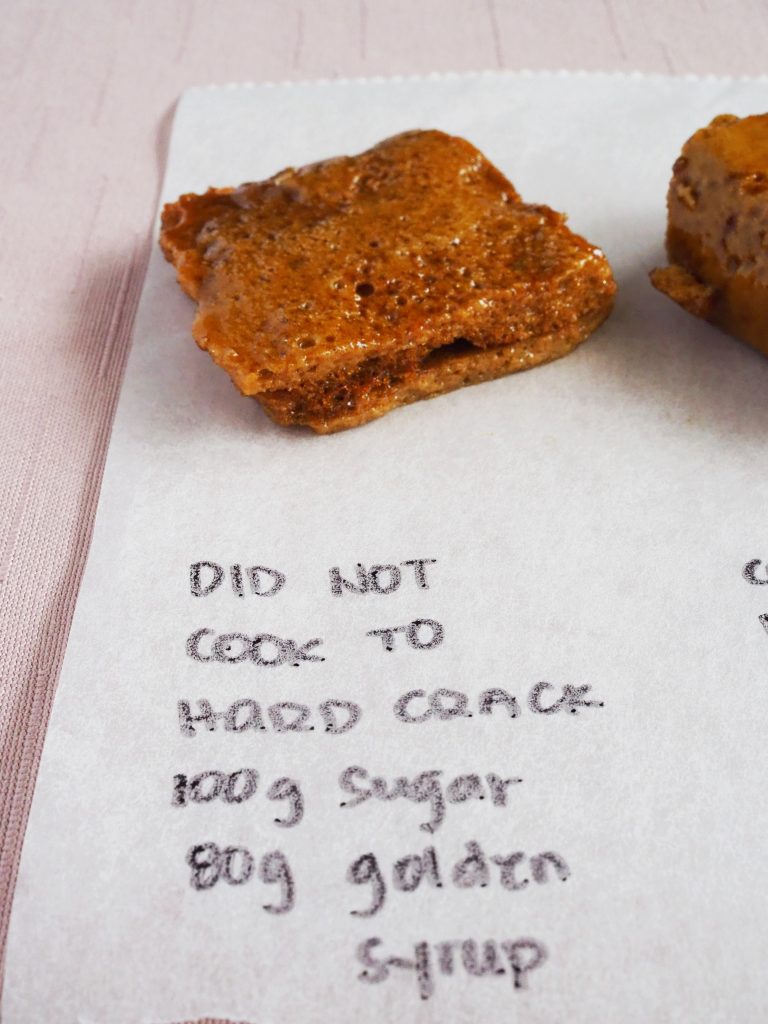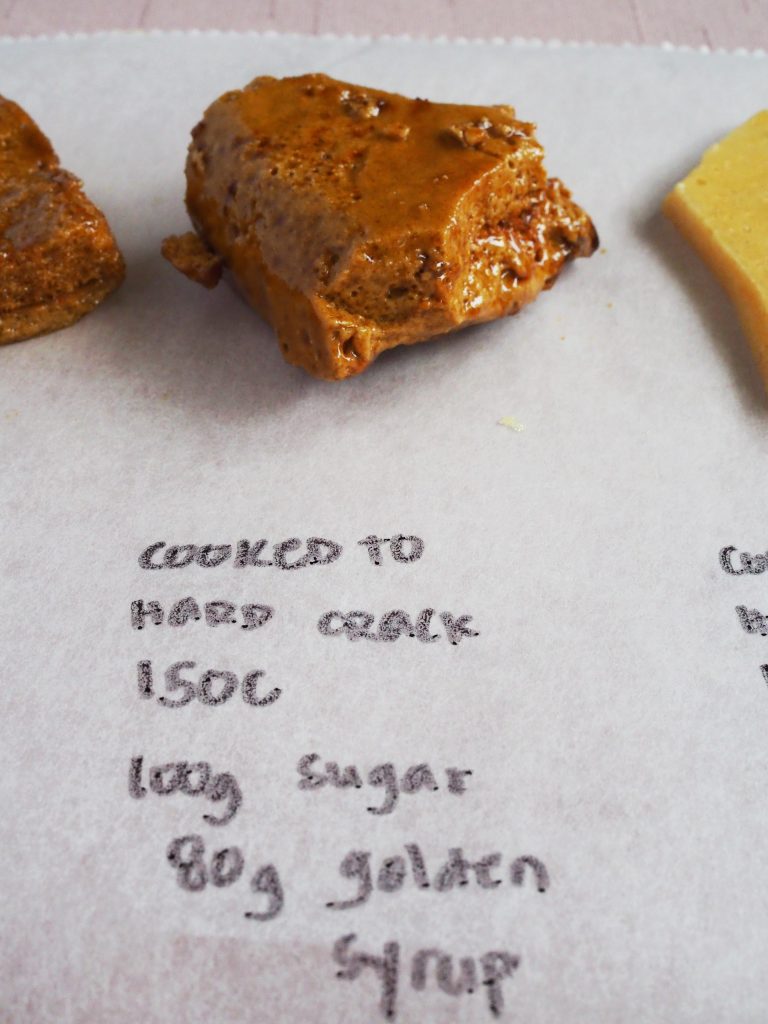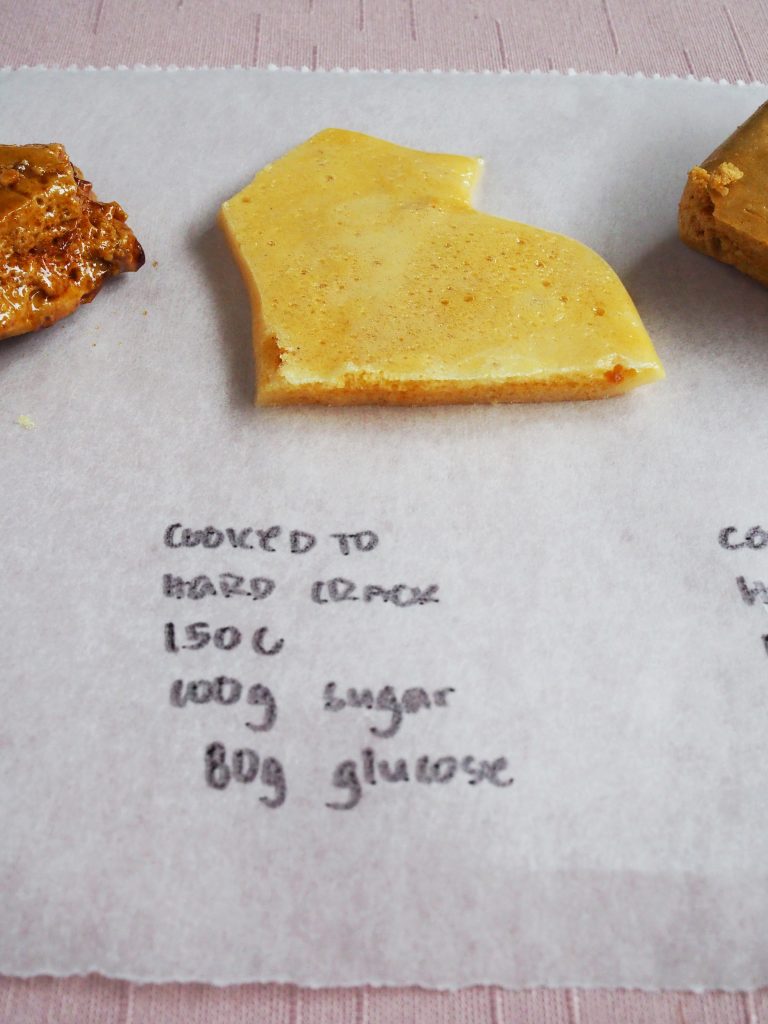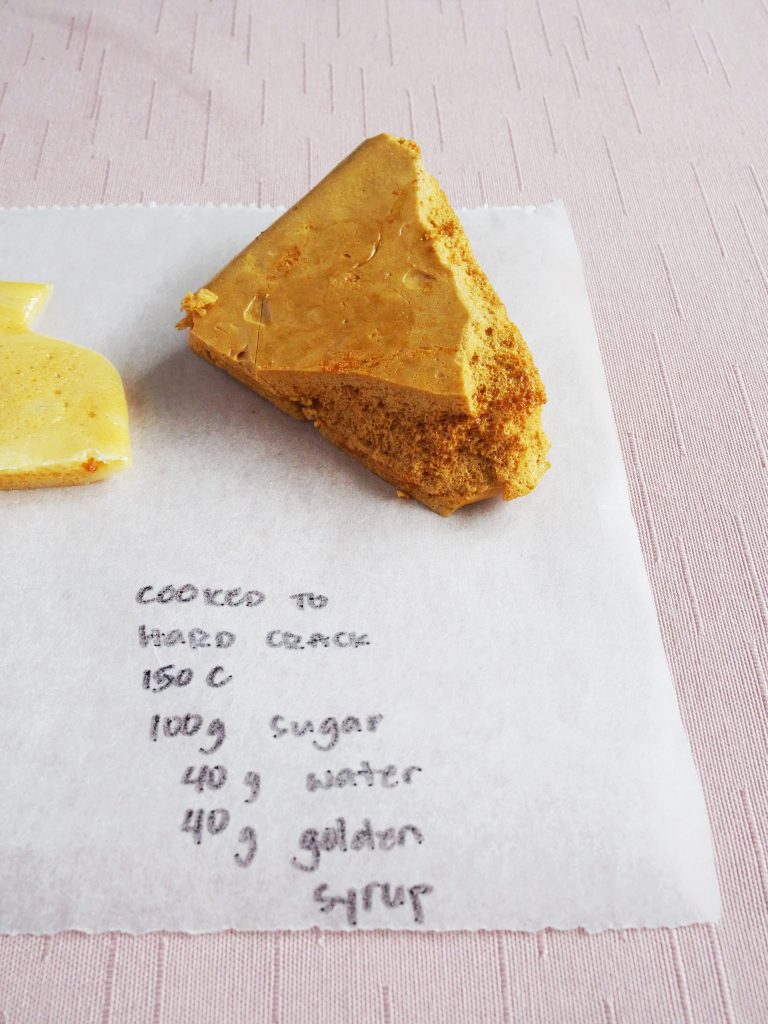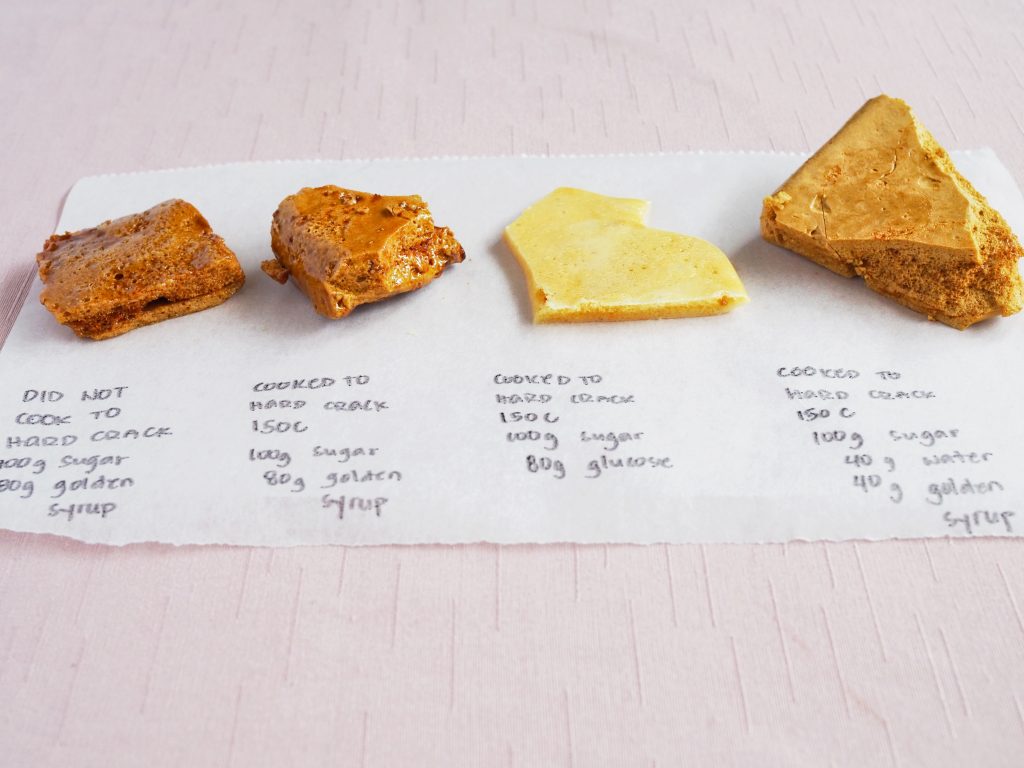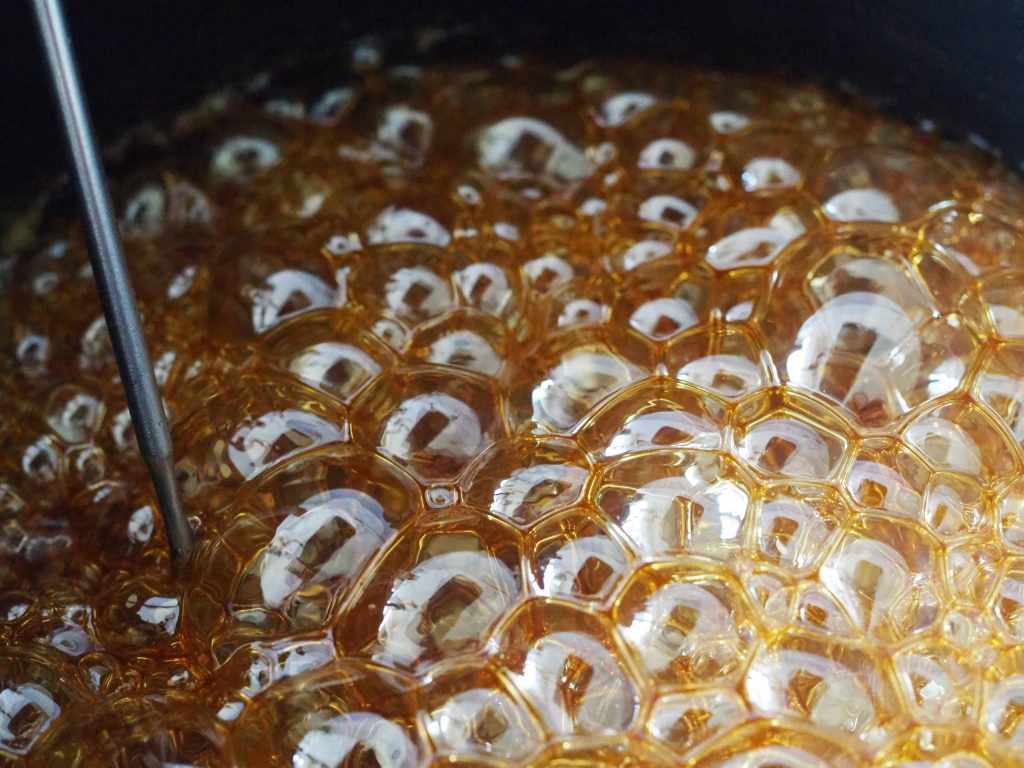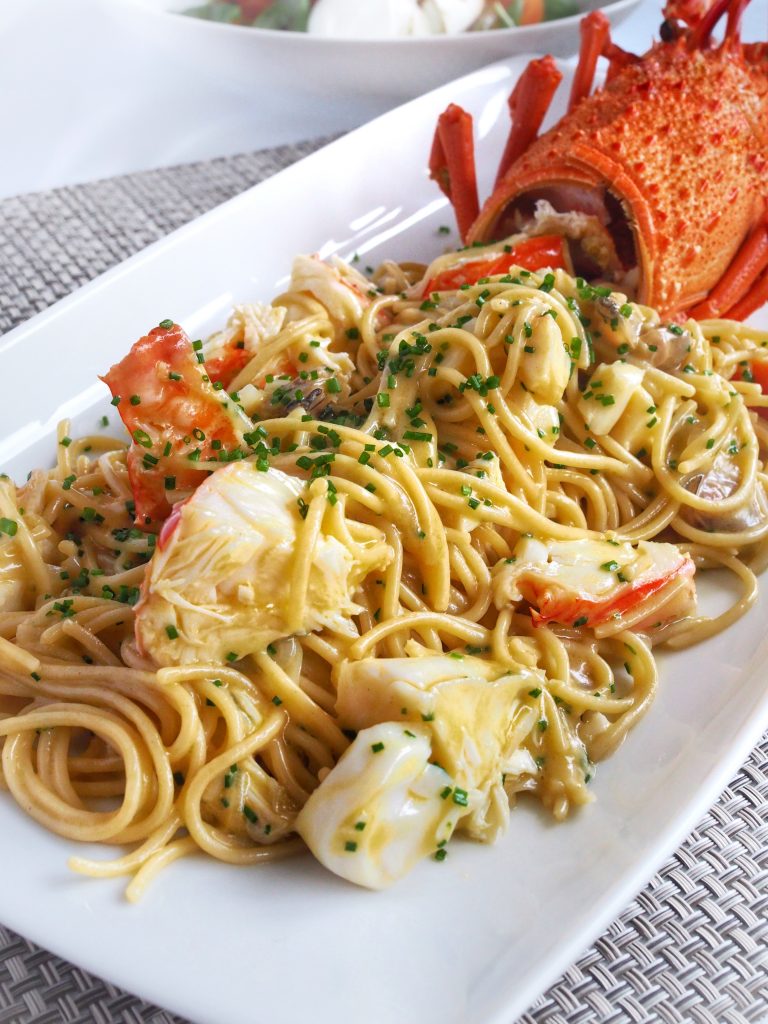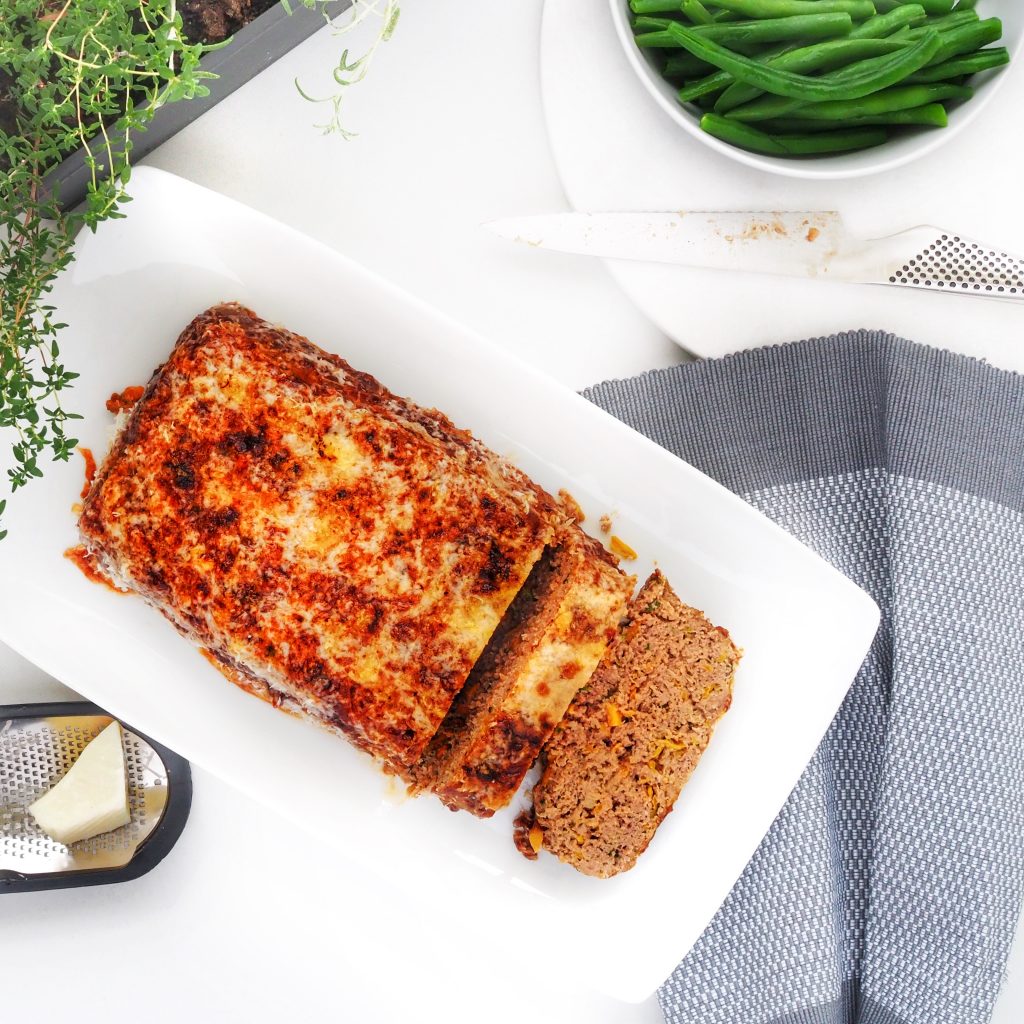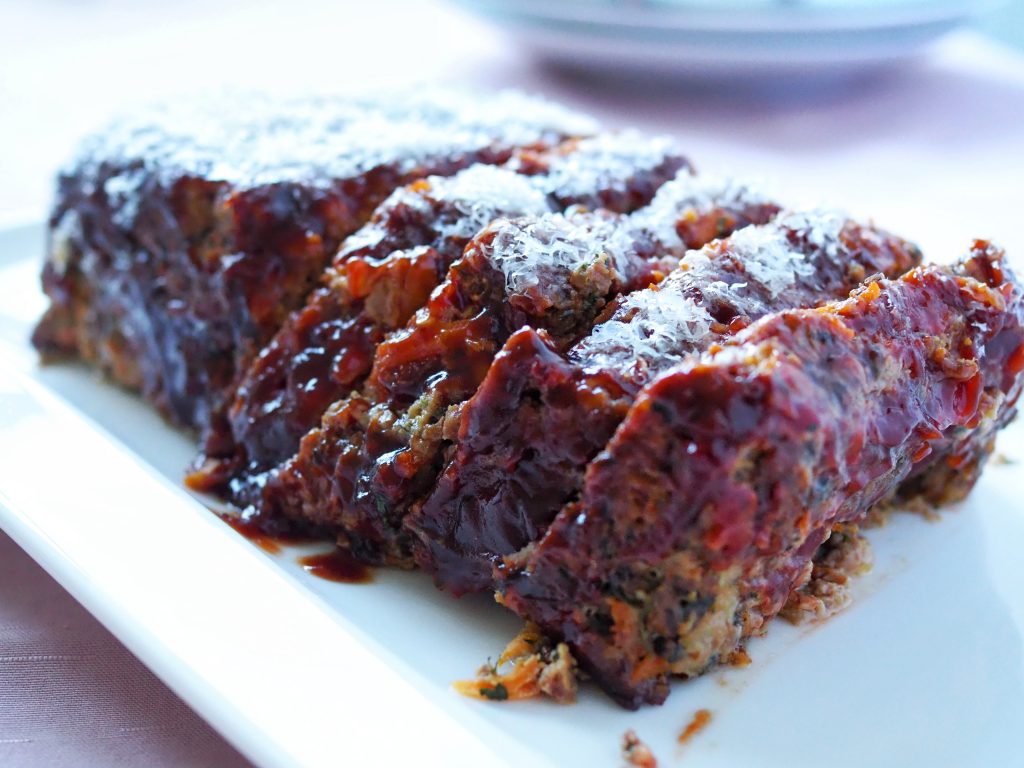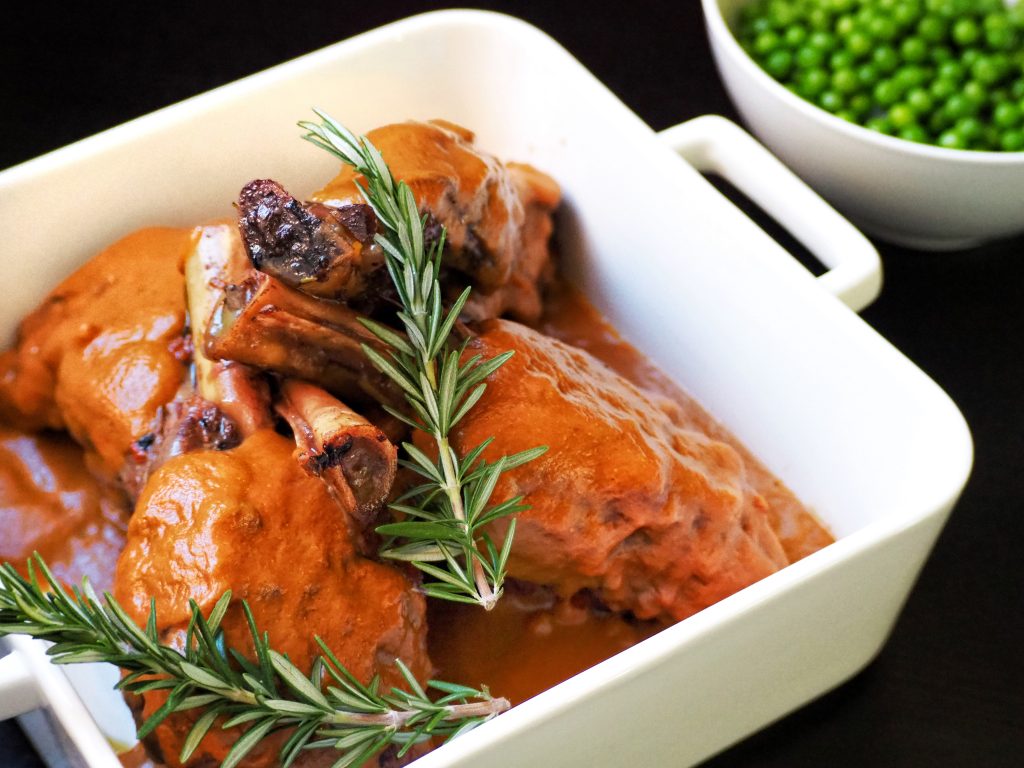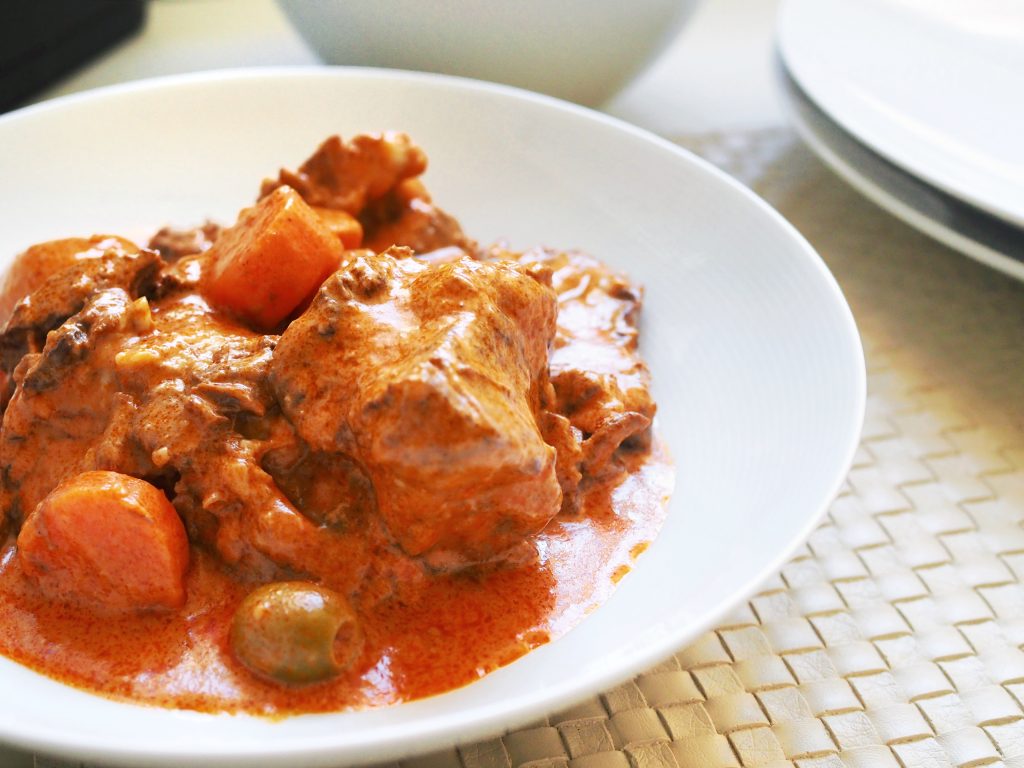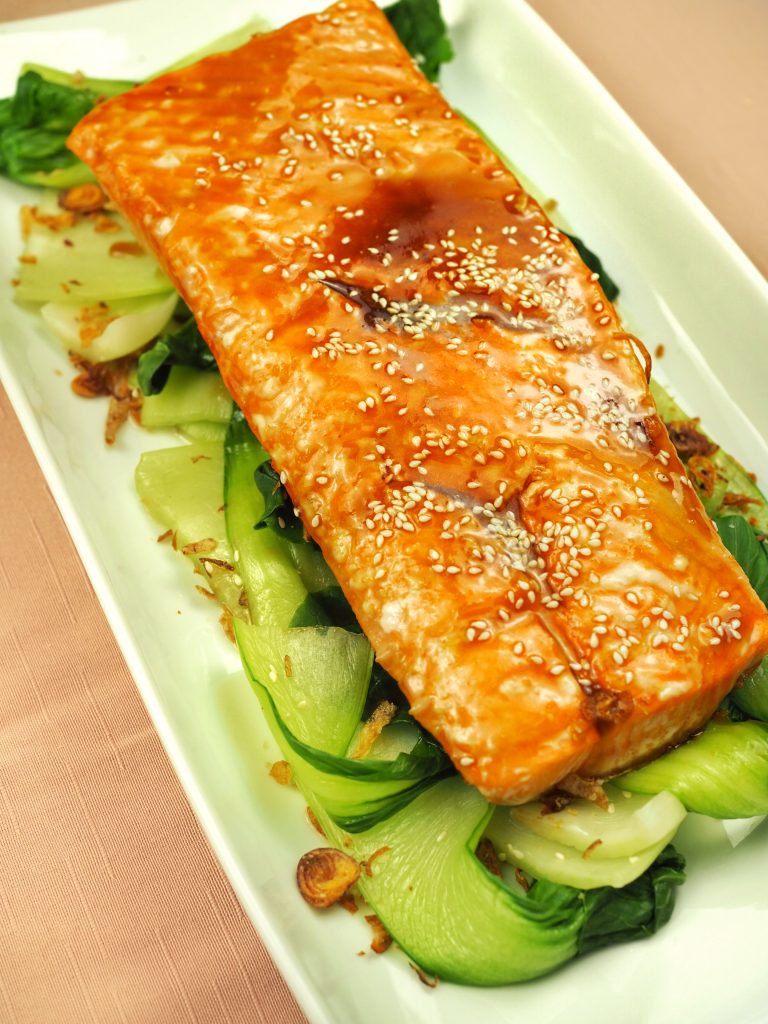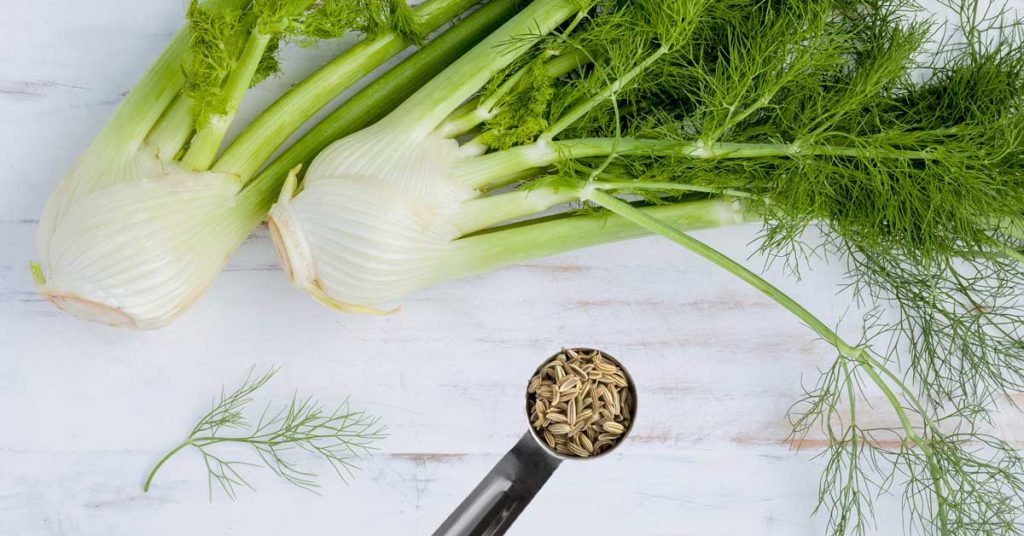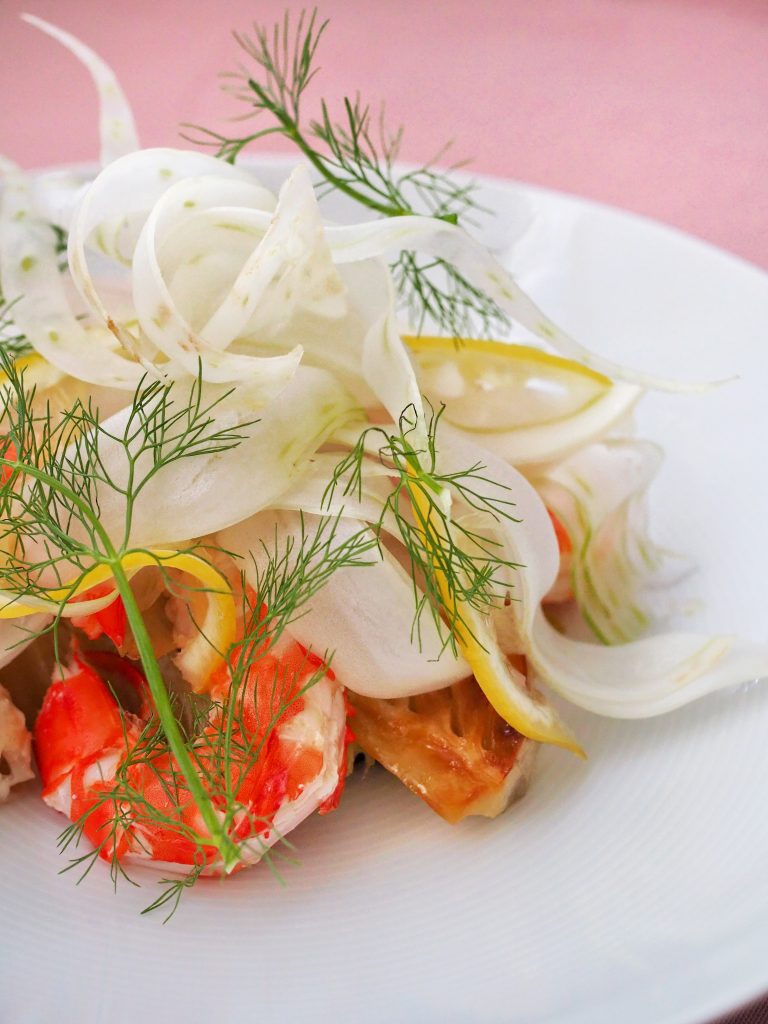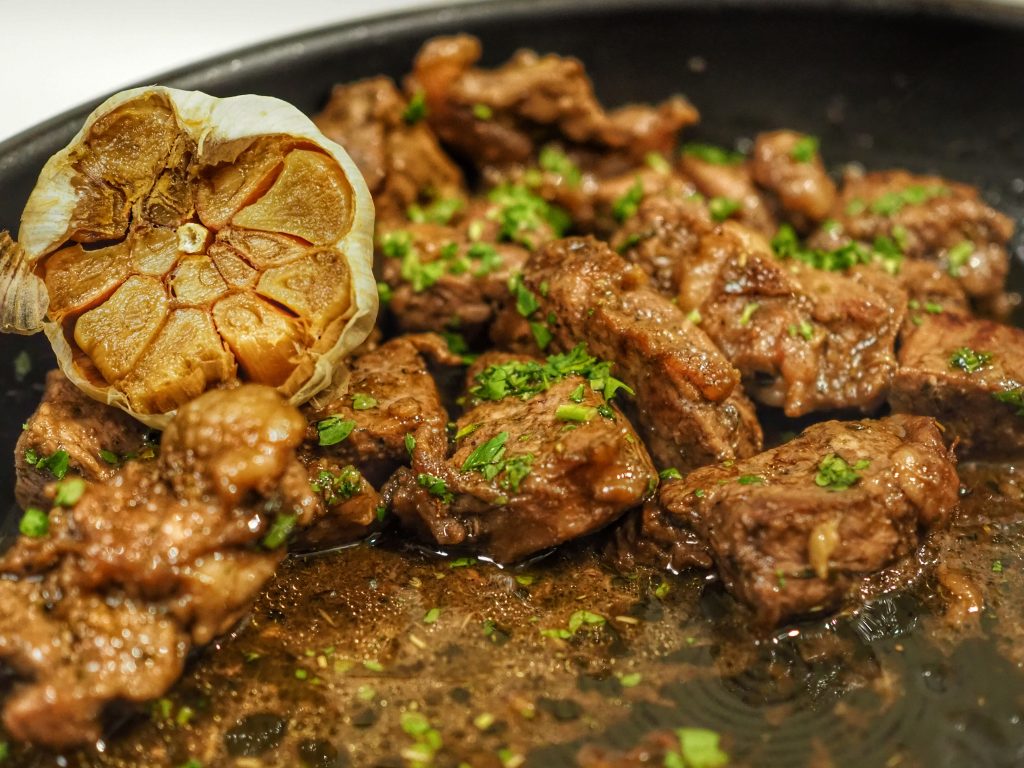My First Sahog @ Home with Filipino Food Movement
Today, I did my first IG Live with Filipino Food Movement. I cooked Filipino sweet and sour fish, or escabeche. And no, I didn’t use cornstarch, or pineapple or ketchup! This is the real deal, I even used fresh tomatoes.
Escabeche is a Filipino dish traditionally consist of fried whole fish, capsicum, onions and sweet and sour sauce. I love making this because it’s easy, quick and delicious! If you’re feeding kids, then you can opt for fillets instead of whole fish so there will be no bones. If you don’t want to fry the fish, you can bake, steam or grill. I’ve tried the sauce on a few white fish and prawns and it’s beautiful. I haven’t tried it on salmon or any oily fish, though. You can make a big batch of sauce and because of the vinegar content, it actually keeps quite well. Although, truthfully, it hasn’t lasted more than a few days in my fridge, so I don’t know how long it would last. I imagine it would be similar to atchara which is pickled vegetables in Filipino. Just make sure you store it in a clean, airtight container.
Watch the video below if you wish to cook along with me. It took about 30 minutes but you can even shorten that by making the sauce in advance.
On the video I used fresh cherry tomatoes. For a quick and economical version that tastes just as nice, you can use a good quality tomato paste. I also like to use sukang iloko because of it’s darker colour and acidity. In Australia, you can get it from your local Filipino store, or you can use sherry vinegar as an alternative. In the Philippines, if you don’t have the options mentioned in your pantry, you can opt for cane sugar vinegar but your escabeche sauce won’t yield the same vibrant colour.
View this post on Instagram
Tips on frying fish:
During the live video, I gave a couple of tips on how to best fry fish:
- Use a non-stick pan with plenty of room for the fish. The right pan for the job is always important. If you’re worried about food sticking to the pan when frying, then non-stick is your friend.
- Hot oil is key but don’t use oil that has a low smoke point like olive oil.
- Pat the fish dry and cut a few slits on the skin. Drying the fish and cutting slits on the skin ensures your fish doesn’t curl up when the skin hits the hot oil.
- Cook on the presentation side. Whether you took the skin-off the fish or not, there is always a presentation side. When the fish has skin, the presentation side is the skin side, otherwise, it’s the other side. Cook your fish longer on the presentation side until it’s almost done. This gives you maximum colour. Then flip and finish on the other side for a couple of minutes.
Now you’re ready to try my escabeche recipe. It’s super easy, and absolutely delicious, so I hope you give it a shot and let me know what you think in the comments section.
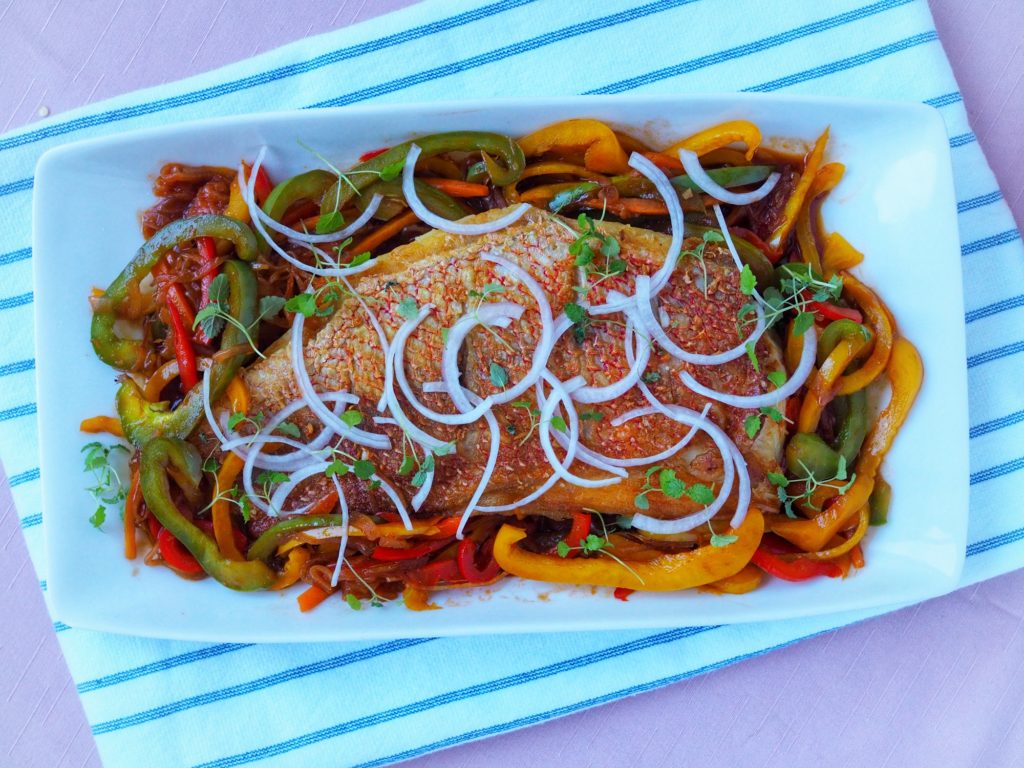
Escabeche
(Filipino Sweet & Sour Fish)
Serves 4
Ingredients
Instructions
- Slice all the vegetables and ginger into similar size strips or julienne. Mince the garlic.
- Heat about 3 tbsp cooking oil in a heavy-base sauté pan. Sauté the garlic then add the onion and ginger. Cook until onions and ginger are soft and translucent then add the tomatoes or tomato paste, whichever one you're using.
- If using fresh tomatoes, cover with a lid and cook down tomatoes for 10 minutes. If using tomato paste, cook out the tomato paste without the lid for 2 minutes.
- Add the vegetables, stir and cover for 10 minutes until vegetables are soft and tomatoes are breaking down (if using fresh tomatoes).
- While simmering the sauce, fry the fish. In a wide frying pan with plenty of room for the fish, heat 2 tablespoons cooking oil. Pat fish dry and season with salt. Once the oil is hot, place the fish in the pan and leave until skin is crispy and golden, about 6 minutes, your fish should look almost done.
- Flip the fish and cook the other side for 1-2 minutes depending on the thickness of your fish. Remove from pan and drain off excess oil with paper towel.
- Finish your sauce by adding vinegar and brown sugar. Bring to the boil then simmer until the sauce is the consistency that you like. Remove from heat.
- To serve, spoon the sauce on the serving platter and place the cooked fish on top. Season with pepper and serve with steamed rice.
Notes
- Fish options: I like using snapper, barramundi, swordfish and coral trout. Any white fish will do.
- Cooking method for fish: You can fry, grill, bake or steam.
- Make-ahead. You can make the sauce in advance and just cook the fish on the day. Makes it a lot easier and the sauce keep every well in the fridge in an airtight container for 3-5 days.


